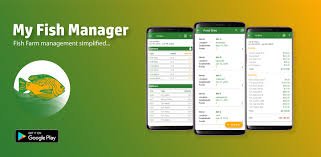The aquaculture industry is rapidly evolving, and the right fish farm management software can make a significant difference in streamlining operations, enhancing productivity, and ensuring sustainability. With the global aquaculture market expected to reach $376.5 billion by 2025 (Grand View Research), choosing the right software is more critical than ever. In this guide, we explore the must-have features of fish farm management software in 2025 and how they contribute to efficient fish farming operations.
1. Cloud-Based and Mobile Accessibility
Modern fish farm operations require real-time access to data from anywhere. Cloud-based software with mobile-friendly dashboards allows farmers to monitor their operations remotely, reducing the need for manual oversight.
Benefits:
- Real-time updates on water quality, fish health, and feeding schedules.
- Secure data storage and easy access across multiple devices.
- Remote monitoring and automation capabilities.
2. Advanced Water Quality Monitoring
Water quality directly impacts fish health and yield. Integrated IoT-based sensors and AI-driven analytics in farm management software help monitor parameters such as:
- pH levels
- Dissolved oxygen
- Ammonia and nitrate levels
- Temperature and salinity
Why It Matters:
- Prevents disease outbreaks.
- Optimizes fish growth conditions.
- Reduces mortality rates and operational losses.
3. Automated Feeding Systems Integration
Feeding accounts for up to 60% of operational costs in aquaculture (FAO). Smart feeding systems integrated with management software ensure:
- Optimized feeding schedules based on fish growth stage.
- Reduced feed wastage.
- Better tracking of feed conversion ratios (FCR).
4. AI-Driven Fish Health Management
Early disease detection is crucial in fish farming. Advanced these farm management software now incorporates AI-powered image recognition and machine learning to analyze fish behavior and detect health issues.
Key Features:
- Automatic alerts for abnormal fish behavior.
- Integration with veterinary databases for disease diagnostics.
- Smart recommendations for treatments.
5. Inventory and Stock Management
Efficient farm management software should include robust inventory tracking for:
- Fingerlings and fish stocks.
- Feed and medication.
- Equipment and supplies.
This feature helps prevent overstocking, reduces wastage, and ensures timely procurement of essential inputs.
6. Comprehensive Data Analytics and Reporting
Data-driven decision-making is key to improving aquaculture productivity. Fish farm management software should provide:
- Growth rate analytics.
- Feed consumption trends.
- Financial reports on costs and profitability.
This allows farm owners to optimize operations, reduce costs, and increase yield.
7. Regulatory Compliance and Traceability
With increasing global regulations in seafood production, software must help fish farms comply with industry standards, including:
- HACCP (Hazard Analysis and Critical Control Points)
- Global GAP (Good Agricultural Practices)
- FDA and EU traceability requirements
By maintaining digital records of stock movements, health records, and water quality reports, farmers can ensure full traceability and compliance with local and international regulations.
8. Integration with Smart Aquaculture Devices
The Internet of Things (IoT) is revolutionizing aquaculture. Fish farm management software should seamlessly integrate with smart aquaculture devices, such as:
- Automated aeration systems.
- Underwater cameras and drones.
- Smart nets and biosecurity sensors.
These integrations enhance real-time monitoring and automation, reducing manual labor and improving overall farm efficiency.
9. Financial and Business Management Tools
Beyond farm operations, software should provide financial tracking and forecasting tools to manage costs, revenue, and profitability.
Must-Have Financial Features:
- Expense tracking.
- Profit and loss statements.
- Budget forecasting.
- Invoice and billing management.
10. User-Friendly Interface and Customization
A highly intuitive and customizable interface ensures that fish farmers can adapt the software to their specific needs.
Benefits:
- Easy navigation for farm staff.
- Role-based access control for different team members.
- Custom dashboards tailored to specific aquaculture needs.
FAQs
- What is the best fish farm management software in 2025?
There are several options available, including solutions with AI, IoT, and cloud-based capabilities. The best choice depends on your farm size, budget, and operational needs. - How does AI help in these farm management software?
AI-powered software can analyze fish behavior, predict diseases, optimize feeding schedules, and enhance decision-making, leading to improved farm efficiency. - Can these farm management software integrate with IoT devices?
Yes, the latest software solutions support integration with IoT-based water sensors, automated feeders, and underwater cameras for real-time monitoring. - How does these farm management software improve sustainability?
By reducing feed wastage, optimizing water use, and preventing disease outbreaks, the software helps fish farms operate more sustainably. - Is cloud-based fish farm software secure?
Yes, reputable solutions provide encrypted data storage, secure access controls, and regular backups to protect farm data.
Final Thoughts
Choosing the right fish farm management software in 2025 is essential for maximizing efficiency, sustainability, and profitability in aquaculture. With advancements in AI, IoT, and automation, the latest software solutions can transform traditional fish farming into a highly data-driven, optimized operation.
When selecting a software solution, ensure it offers real-time monitoring, automation, AI-driven analytics, compliance management, and business tools. Investing in the best technology today will position your aquaculture business for long-term success.
